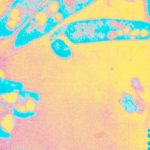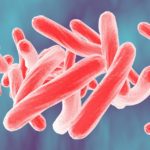Link to Pubmed [PMID] – 17517970
J. Exp. Med. 2007 Jun;204(6):1395-403
Mycolactone is a polyketide toxin produced by Mycobacterium ulcerans (Mu), the causative agent of the skin disease Buruli ulcer (BU). Surprisingly, infected tissues lack inflammatory infiltrates. Structural similarities between mycolactone and immunosuppressive agents led us to investigate the immunomodulatory properties of mycolactone on dendritic cells (DCs), the key initiators and regulators of immune responses. At noncytotoxic concentrations, phenotypic and functional maturation of both mouse and human DCs was inhibited by mycolactone. Notably, mycolactone blocked the emigration of mouse-skin DCs to draining lymph nodes, as well as their maturation in vivo. In human peripheral blood-derived DCs, mycolactone inhibited the ability to activate allogeneic T cell priming and to produce inflammatory molecules. Interestingly, production of the cytokines interleukin (IL) 12, tumor necrosis factor alpha, and IL-6 was only marginally affected, whereas production of the chemokines macrophage inflammatory protein (MIP) 1alpha, MIP-1beta, regulated on activation, normal T cell expressed and secreted, interferon gamma-inducible protein 10, and monocyte chemoattractant protein 1 was abolished at nanomolar concentrations. Importantly, mycolactone endogenously expressed by Mu mediated similar inhibitory effects on beta-chemokine production by DCs. In accordance with the histopathological features of BUs, our results suggest that bacterial production of mycolactone may limit both the initiation of primary immune responses and the recruitment of inflammatory cells to the infection site. Moreover, they highlight a potential interest in mycolactone as a novel immunosuppressive agent.



